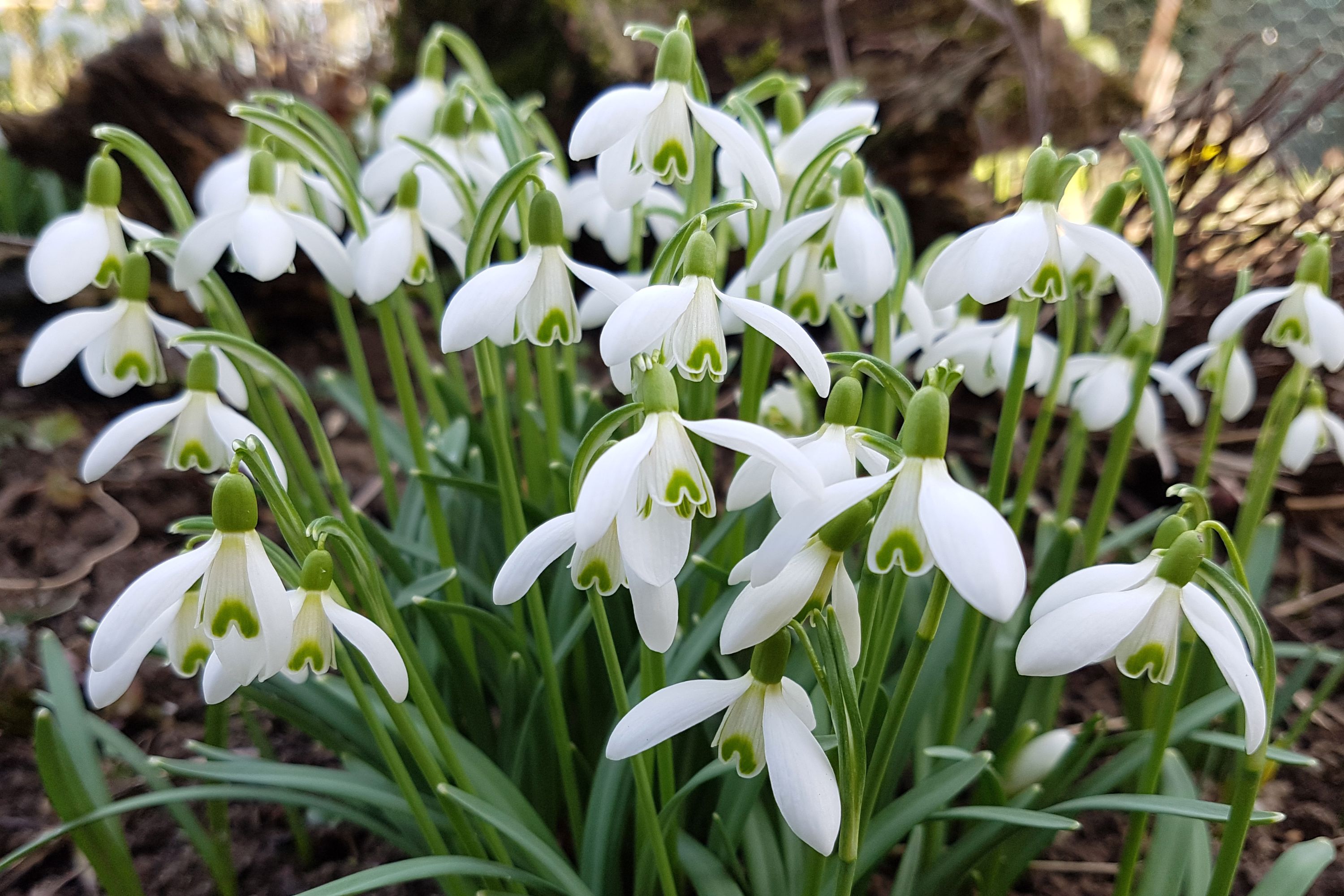Snowdrop
(Galanthus nivalis)

Description
Galanthus nivalis, the snowdrop or common snowdrop, is the best-known and most widespread of the 20 species in its genus, Galanthus. Snowdrops are among the first bulbs to bloom in spring and can form impressive carpets of white in areas where they are native or have been naturalised. They should not be confused with the snowflakes, in the genera Leucojum and Acis. The generic name Galanthus, from the Greek gala (milk) and anthos (flower), was given to the genus by Carl Linnaeus in 1735. He described Galanthus nivalis in his Species Plantarum published in 1753. The epithet nivalis means "of the snow", referring either to the snow-like flower or the plant's early flowering. The common name snowdrop first appeared in the 1633 edition of John Gerard's Great Herbal (in the first edition (1597) he described it as the "Timely flowring Bulbus violet"). The derivation of the name is uncertain, although it may have come from the German word Schneetropfen, which was a type of earring popular around that time.Other British traditional common names include "February fairmaids", "dingle-dangle", "Candlemas bells", "Mary's tapers" and, in parts of Yorkshire, "snow piercers" (like the French name perce-neige). Galanthus nivalis grows to around 7–15 cm tall, flowering between January and April in the northern temperate zone (January–May in the wild). They are perennial, herbaceous plants which grow from bulbs. Each bulb generally produces two linear, or very narrowly lanceolate, greyish-green leaves and an erect, leafless scape (flowering stalk), which bears at the top a pair of bract-like spathe valves joined by a papery membrane. From between them emerges a solitary, pendulous, bell-shaped white flower, held on a slender pedicel. The flower consists of six tepals, also referred to as segments. The outer three are larger and more convex than the inner ones. The inner flower segments are usually marked on their outer surface with a green or greenish-yellow V- or U-shaped mark (sometimes described as "bridge-shaped") over the small sinus (notch) at the tip of each tepal. The inner surface has a faint green mark covering all or most of it. Occasionally plants are found with green markings on the outer surface of the outer tepals.
Taxonomic tree:







